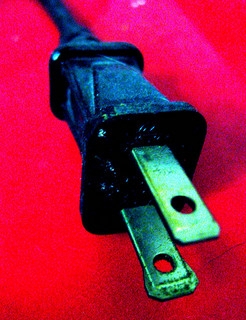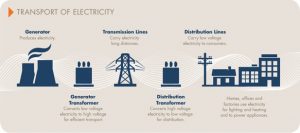
The electricity market has changed rapidly in recent years. We no longer have to buy our electricity from a particular electricity retailer, and have it delivered via poles and wires owned by the local distribution business. Consumers can choose from a range of new products and services that are transforming the energy landscape. For example, households can generate their own electricity, store it using batteries and monitor and manage their energy consumption with smart meters.
In some states, including NSW, consumers can shop around for the best deal. While this has the potential to promote competition amongst retailers and thereby reduce bills for savvy consumers, it also places the onus on households to understand and evaluate the packages on offer, and make considered choices. Unfortunately, retail competition isn’t strong in many regional areas, and not all households have the same capacity to make informed choices. This means that some customers are unable to take full advantage of the benefits of the competitive market.
That’s why PIAC’s Energy and Water Consumer Advocacy Program (EWCAP) advocates for the interests of consumers in the price-setting processes, with a particular focus on those who may be disadvantaged.
Through submissions, policy work and advocacy, EWCAP works to ensure that people are afforded basic consumer protections that recognise the essential nature of energy services, and that make electricity more affordable for all.
The National Electricity Market
In NSW, electricity is supplied to consumers via the National Electricity Market (NEM), which is one of the longest interconnected power systems in the world, carrying power to residents and businesses in all of Australia’s eastern states. The NEM is an interconnected grid that dispatches power to meet demand. The term is also used more broadly to describe the systems involved in enabling generators to sell electricity and retailers buy it to on-sell to consumers.
The NEM also has a financial function. Since it’s establishment in 1998, the NEM has acted as a wholesale commodity market, underpinned by sophisticated information technology systems that control both the supply of electricity to users and the spot price of electricity.

What’s in a bill?
The governance and function of the electricity system has a direct impact on household electricity bills. Through their bills consumers pay the following costs:
- Wholesale costs: costs involved in generating electricity.
- Transmission costs: costs to build and maintain the high voltage power lines.
- Distribution network costs: costs to build and maintain the network of low voltage poles and meters that deliver, measure and record energy to households and businesses.
- Retail Costs: costs to connect customers, to provide customer service and manage accounts.
- Green costs: costs that arise from government programs to save energy and support the development of renewable energy.
How is the electricity system governed?
The Australian Energy Market Agreement (AEMA) sets out the NEM’s legislative and regulatory framework. The Council of Australian Governments (COAG) entered into the AEMA in 2004 in recognition of the need to establish a broad national architecture for electricity and gas. The NEM comprises the COAG Energy Council and the three NEM institutions: the Australian Energy Market Commission (AEMC), the Australian Energy Regulator (AER) and the Australian Energy Market Operator (AEMO).
How are prices set?
The price on an electricity bill comprises a range of costs, as discussed above. Some parts of the prices in the electricity system are regulated and some are deregulated. Generally speaking (because some States and Territories differ), the generation and the retail aspects of the electricity system are deregulated and are subject to and determined by market forces. Network services, on the other hand, are natural monopolies and are therefore subject to regulation.
A significant proportion (approximately 40%) of a final electricity bill price is network costs. Network prices are set on the basis of five-year revenue determinations made by the AER. The AER sets an overall revenue allowance that network businesses can recover from consumers to provide safe and reliable services. The revenue allowance is based on the AER’s assessment of efficient costs. If a network business can subsequently provide the required services at a lower costs it can ‘keep the difference’ for a period of time. Conversely, if the network business incurs higher costs, it will bear the difference. Once the determinations are made, networks then set the individual tariffs, subject to a number of rules.
In NSW electricity prices have risen dramatically in recent years. Since 2008, our electricity prices have doubled, mainly due to inefficiencies in the way the network businesses operate, as well as massive overspending on infrastructure in an environment where demand for electricity is declining. This ‘gold-plating’ appears to be particularly prevalent in NSW, where it costs twice as much to get electricity from a power station to a home as it does in Victoria.